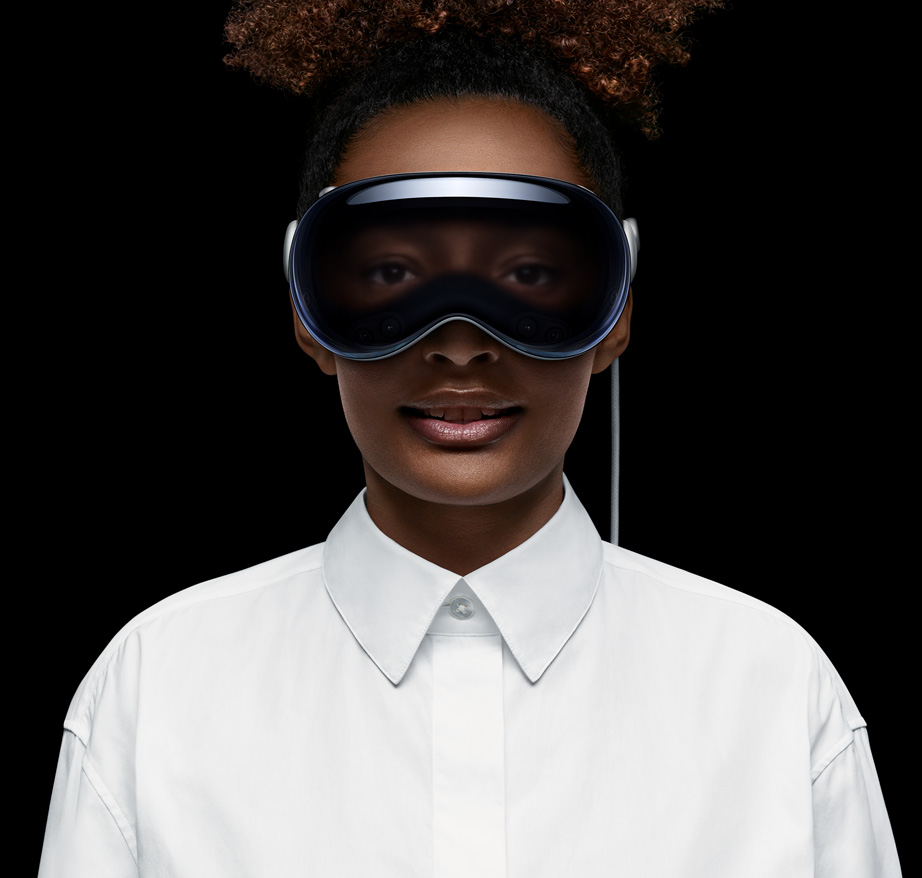What is the Apple Vision Pro?
Apple’s newest venture into virtual reality, the Apple Vision Pro, just dropped at the beginning of this month on February 2nd, 2024 in the United States. The device differs from Apple’s usual products in that it is quite futuristic in design and function; the Vision Pro is Apple’s take on a VR headset, branded a method of “spatial computing.” It’s basically an iPhone that you wear on your face, with a transparent screen so that the user can see their real environment while using their applications, with their eyes, fingers, and voices as controls. You guessed it: it looks pretty freaky and dystopian when being used, but appearance isn’t everything that’s off-putting about this headset.
There have already been instances of people using it while driving, people wearing it for days at a time, and other dangerous misuses of the product that were bound to happen with something of its nature. We’ve already been practically glued to our smartphones for the last 20-something years, and this headset being released by such a notable tech giant as Apple is a sign of the times. It alludes to a future in which we’re going to become more and more unified with our devices, and while it sounds out there, this headset could be another step in the direction of people taking it too far, such as starting to implant devices in their bodies. Our digital obsessions have gone from a little box always on our person, to then being strapped to our face, and at this rate, it isn’t hard to imagine what futuristic technology could suddenly become commonplace and take over our lives.
Apple advertised the Vision Pro as a product that “seamlessly blends digital content with your physical space.” When put on, the user sees their apps and media as floating around their surrounding environment, with the world as their screen. Apple’s website contains a sleek-looking immersive experience for potential customers to explore the product’s capabilities. It’s no lie that Apple’s marketing team can make this odd and freaky device look attractive, with modern-looking depictions of the device being used in everyday life.
Occurrences Upon Release
As soon as the Apple Vision Pro was made available for preorder in the United States on January 19th, the headsets sold out almost immediately. Apple has already sold around 200,000 units, most of these being purchased before the product’s official release in February. The excitement of consumers was undeniable, with this headset being the start of Apple’s first new product category since the Apple Watch came out in 2014. The Vision Pro is being sold for $3,500, which is a pretty hefty price tag that a pretty niche demographic of people can and are willing to spend on this type of product. Rich weirdos come to mind, but all in all, it takes a unique kind of person to purchase this device, and we’re just starting to see the beginning of its misuse and adverse effects.
You may have seen the viral videos of people using the Apple Vision Pro while driving a car, on public transportation, working out at the gym, and more, which, in the grand scheme of possibilities, are relatively tame versions of how this product could be abused. While frightening and worrying, these incidents lead us to theorize about what worse dangers these could evolve into. Are the pilots of commercial flights going to be distracted by these headsets? Or the operators of heavy machinery in factories? The most notable viral videos (which can be found on The Guardian) sparked safety concerns, as these headsets clearly have the potential to be used by many while engaging in activities that require one’s full attention. There have been multiple Apple Vision Pro users who were seen wearing and operating the headset whilst using a self-driving car. While these individuals have argued that it is safe to do so briefly due to the vehicle’s self-correcting capabilities, Secretary of Transportation Pete Buttigieg has had to make a statement reminding drivers that “ALL advanced driver assistance systems available today require the human driver to be in control and fully engaged in the driving task at all times,” on his X, @SecretaryPete.
The Future of Immersive Technology
It’s an almost unanimous agreement that this technology, whether Apple’s rendition or another, will permeate the fabric of our lives and become just as instrumental to us as the smartphone is currently. Every generation is always apprehensive about the new technology of their time at first, but then slowly start to integrate it into their everyday. Emma Brockes of The Guardian predicts this will inevitably be the case with the Apple Vision Pro: “As the technology normalizes and improves, this resistance will probably erode and we will become as dependent on checking messages with a flick of the eye as we are at present on our watches and phones.” With each new innovation, we as a society beg the question of whether we have gone too far, or have advanced enough in terms of consumer technology for our own good. What’s terrifying is that we don’t know how to halt this evolution, as it has never stopped. As Brockes outlined, what we find dystopian and unnatural now will almost surely become commonplace at some point in the future.
Arwa Mahdawi of The Guardian feels similarly about the inexorability of this spatial computing technology and argues it’s only a matter of time: “There is no debate that we are moving towards a world where “real life” and digital technology seamlessly blur. The internet is moving off our screens and into the world around us. And that raises serious questions about how we perceive the world and what we consider reality. Big tech companies are desperate to rush this technology out but it’s not clear how much they’ve been worrying about the consequences.” Mahdawi feels that we should be devoting more attention to the lack of accountability of big tech companies who are looking to make a buck off of the tech addictions of their customers. After all, it is those tech giants that we must look to for a stop to this gross evolution. In a capitalist economy to which the sale and use of these companies’ devices are so vital, this need for a slowdown is quite a complex issue. “Apple, by the way, tells people not to use the headset while driving but hasn’t included any guardrails that stop the technology being used by someone behind the wheel,” brings up Mahdawi. It’s clear that companies such as Apple are so focused on creating, creating, and creating, that they do not stop and think about the consequences of their creations, and their inherent responsibility to prevent, or at least mitigate them.
There is a specific feature of The Apple Vision Pro that makes it seem especially addictive. Emma Brockes of The Guardian outlined her trial use of the device and wrote, “There is, however, something called spatial photos and videos, which allows users to effectively inhabit a memory with full, 3D immersion. All I could think as I watched the demo birthday party unfold was how painful this verisimilitude might be – and how addictive – to those grieving; a lotus-eaters-type scenario one would never, ever want to leave.” This potential for habitual and emotional reliance on devices is reminiscent of employees in Silicon Valley being very restrictive of their kids’ use of the very technology they create and market. There’s no doubt that the creators of this technology would know its potential to become all-consuming, so if they wouldn’t let their kids use it, we should be extremely wary of this new headset’s capabilities to become addictive for us as customers.
So What?
In summary, we should be very afraid of this headset’s potential to become essential. The multitude of seen and unforeseen dangers of using the Apple Vision Pro should be very alarming to us as consumers and as citizens of an ever-advancing world. As tech giants continue to fly too close to the sun, we’re all going to have to suffer the consequences.










